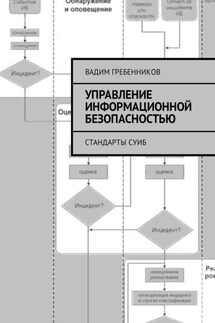IT Cloud - страница 39
l7-default-backend-5bc54cfb57-6qk4l 1/1 Running 0 5h
metrics-server-v0.2.1-fd596d746-g452c 2/2 Running 0 5h
esschtolts @ cloudshell: ~ / bitrix (essch) $ kubectl get pods –namespace = default
NAMEREADY STATUS RESTARTS AGE
Nginxlamp-b5dcb7546-g8j5r 1/1 Running 0 4h
Let's create a scope:
esschtolts @ cloudshell: ~ / bitrix (essch) $ cat namespace.yaml
apiVersion: v1
kind: Namespace
metadata:
name: development
labels:
name: development
esschtolts @ cloudshell: ~ (essch) $ kubectl create -f namespace.yaml
namespace "development" created
esschtolts @ cloudshell: ~ / bitrix (essch) $ kubectl get namespace –show-labels
NAME STATUS AGE LABELS
default Active 5h none>
development Active 16m name = development
kube-public Active 5h none>
kube-system Active 5h none>
The essence of working with scope is that for specific clusters we set the scope and we can execute commands specifying it, while they will apply only to them. At the same time, except for the keys in commands such as kubectl get pods I do not appear in the scope, therefore the configuration files of controllers (Deployment, DaemonSet and others) and services (LoadBalancer, NodePort and others) do not appear, allowing them to be seamlessly transferred between the scope, which especially relevant for the development pipeline: developer server, test server, and production server. Scopes are set in the cluster context file $ HOME / .kube / config using the kubectl config view command . So, in my cluster context entry, the scope entry does not appear (default is default ):
– context:
cluster: gke_essch_europe-north1-a_bitrix
user: gke_essch_europe-north1-a_bitrix
name: gke_essch_europe-north1-a_bitrix
You can see something like this:
esschtolts @ cloudshell: ~ / bitrix (essch) $ kubectl config view -o jsonpath = '{. contexts [4]}'
{gke_essch_europe-north1-a_bitrix {gke_essch_europe-north1-a_bitrix gke_essch_europe-north1-a_bitrix []}}
Let's create a new context for this user and cluster:
esschtolts @ cloudshell: ~ (essch) $ kubectl config set-context dev \
> –namespace = development \
> –cluster = gke_essch_europe-north1-a_bitrix \
> –user = gke_essch_europe-north1-a_bitrix
Context "dev" modified.
esschtolts @ cloudshell: ~ / bitrix (essch) $ kubectl config set-context dev \
> –namespace = development \
> –cluster = gke_essch_europe-north1-a_bitrix \
> –user = gke_essch_europe-north1-a_bitrix
Context "dev" modified.
As a result, the following was added:
– context:
cluster: gke_essch_europe-north1-a_bitrix
namespace: development
user: gke_essch_europe-north1-a_bitrix
name: dev
Now it remains to switch to it:
esschtolts @ cloudshell: ~ (essch) $ kubectl config use-context dev
Switched to context "dev".
esschtolts @ cloudshell: ~ (essch) $ kubectl config current-context
dev
esschtolts @ cloudshell: ~ (essch) $ kubectl get pods
No resources found.
esschtolts @ cloudshell: ~ (essch) $ kubectl get pods –namespace = default
NAMEREADY STATUS RESTARTS AGE
Nginxlamp-b5dcb7546-krkm2 1/1 Running 0 10h
You could add a namespace to the existing context:
esschtolts @ cloudshell: ~ / bitrix (essch) $ kubectl config set-context $ (kubectl config current-context) –namespace = development
Context "gke_essch_europe-north1-a_bitrix" modified.
Now create a new cluster in the scope dev (it is now the default, and it can be omitted –namespace = dev ) and removed from the field by default visibility default (it is no longer the default for our cluster, and it is necessary to specify –namespace = default ):








